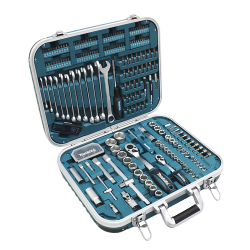Buying Guide: Choosing the Best Socket Set
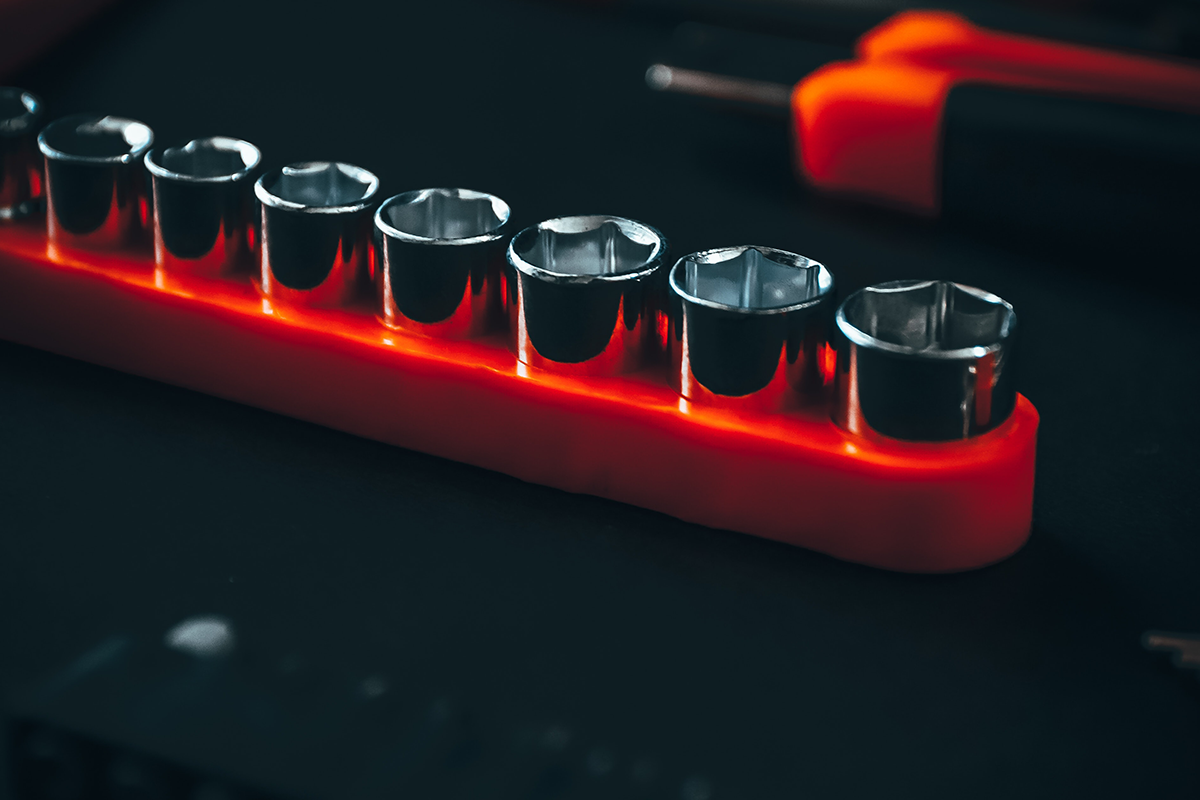
What are socket sets used for?
Socket sets offer a comprehensive selection of socket wrenches allowing you to tighten or loosen fasteners of all sizes and types quick and easy. They are available in imperial or metric sizes, and the most inclusive ones often offer both options. Multi-piece sockets include ratchets, regular and deep sockets, adaptors, and joints.
Smaller sets are ideal for simple everyday tasks, while a large set can offer additional deep sockets and multiple drive sizes.
This buying guide informs you of the different types of sockets available, their usage and features and introduces you to the best socket sets available.
In the end, you will have the knowledge and expertise to tackle any project that comes your way.
Most common socket set components:
- Ratchet
- Universal Socket
- Pass-Through Socket
- Driver Socket
- Spark Plug Socket
- Impact Socket
- Socket Adaptor
- U-Joint Adapter
- Socket/Ratchet Extension Bar
- Torque Wrench
- Joint
Socket Types
Chrome Plated Non-Impact Sockets
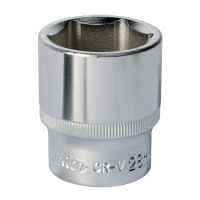
The most common socket available on the market is the chrome-plated non-impact socket. The chromium-vanadium steel it is made of goes through a heat treatment process which grants very extreme hardness. These sockets have thin walls making it easy to work in narrow spaces when applying hand torque.
These sockets are best used for auto repairs, household jobs and outdoor projects involving non-powered hand-driven jobs. You should avoid using non-impact sockets with an impact wrench, as the increased torque can easily shatter the socket.
Impact Sockets

Impact sockets are used for heavy-duty jobs requiring air or power tools. They have thicker walls, finished in black phosphate or black oxide to withstand higher torque, and pliable steel composition. Thanks to the cross hole in the handle end, impact sockets can be securely attached to the square drive of an impact gun.
Universal Sockets
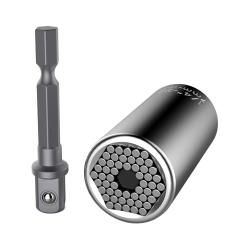
A universal socket offers extreme DIY versatility. Its shape resembles a standard deep socket but with many small metal pins in its head. These pins make the socket compatible with various fasteners, perfect for smaller jobs or tasks requiring multiple fastener types.
Driver Socket

Driver sockets are screwdriver bit fasteners, the most common ones including flathead, Phillips, hex or star-head screws.
Spark Plug Sockets
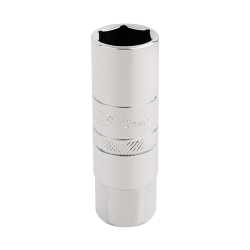
As the name suggests, this socket type is most commonly used in the automotive industry; it is a deep socket designed to fit over the body of a spark plug in the spark-ignition engine.
This socket is lined with a rubber insert that grips the spark plug, allowing you to pull the plug out once loosened.
Socket Adaptor
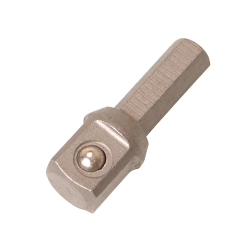
Socket adaptors allow you to fit a socket to a ratchet handle with a different size (drive adaptors) or shape (hex-shank adaptors).
U-Joint Adapter
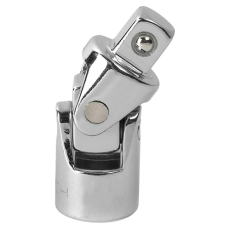
A U-joint adapter is an accessory that allows you to connect a socket to a ratchet and use it at different angles relative to the fasteners.
Pass-Through Socket

You can use a pass-through socket to turn a nut on a longer, threaded bolt, allowing the bolt to extend through the socket and ratchet. There is no need for low-profile and deep sockets if you have this socket type in your set. However, pass-through sockets can work only with specifically designed ratchets.
Breaker Bar
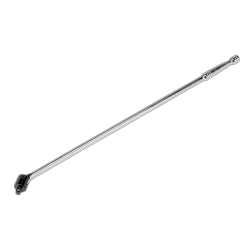
Breaker Bars are long, non-ratcheting bars often used with sockets. They provide greater torque with the same force applied thanks to their extended handle.
Extension Bar

An extension bar is an attachment added between a socket and a ratchet to increase the reach of the socket and turn recessed fasteners.
All you need to know about Ratchet Wrenches
One of the most essential socket set pieces is the ratchet wrench. Ratchets come with three different drive sizes- 1/4”, 1/2” and 3/8”. The drive is the part of the ratchet where the socket gets attached. Different drive sizes have various applications and specifications; thus, it is essential to align the drive size with the job.
Drive Size
1/4” Drive
A ¼” drive ratchet is perfect for small DIY projects, such as shelf assembly, stud attaching, or other low torque jobs. A ¼” drive will give you just enough torque for a job like that (no more than 78Nm). These are usually used for smaller sized sockets (maximum 14mm).
3/8” Drive
A 3/8” drive ratchet withstands higher torque, and it is more versatile than the ¼” equivalent. Sockets with a 3/8” drive have thicker and more rigid sidewalls and can be used at home and in the workshop.
1/2” Drive
½” inch drive ratchets are used for heavy-duty jobs where you operate with big fasteners and require more force or torque. For example, when you replace a vehicle wheel or assemble heavy machinery. These drives are primarily used for 19mm sockets and above.
Gearless vs Geared Ratchet
Most ratchets operate with a geared drive mechanism allowing them to move only in one direction. This mechanism comprises a gear and a pawl (a type of latch consisting of a spring-loaded tapered lever, pivoted at the end). The gear has asymmetrically shaped teeth allowing them to move past the pawl only when the gear rotates in the desired direction, leading to a fixed swing amplitude.
In recent years, gearless ratchet models have also gained popularity. Gearless models don’t have a ratcheting mechanism inside them; instead, they have a roller bearing. Thus, these ratchets require fewer movements to turn fasteners than a geared drive.
Drive Shape
The most common socket drive shapes are hex and square. Owning a few socket drive shapes and sizes will allow you to tackle almost all standard fasteners in everyday jobs.
Ratchet Head
A ratchet’s head can be either fixed, flex or swivelled. Flexible-head ratchets let you adjust the handle’s angle to work in tight areas. However, flex-head ratchets are not suitable for high torque jobs as they add one more possible failure point to your tool.
Swivel-head ratchets are bulky ratchets giving you a 270-degree rotation of the drive. They can easily switch from a ratchet to a nut driver to quickly remove fasteners.
In terms of shape, there are two main shapes of ratchet heads, round, and pear.
Locking Mechanism
Some ratchets have locking mechanisms to keep the socket and the fastener in place without falling. Sometimes this can be a small ball detent holding the socket, or a push-button at the back of the ratchet head, allowing for locking and unlocking the mechanism.
There are also ratchets with a directional knob at the back, allowing you to change the direction whether you tighten or loosen the fastener.
Makita P-90532
Home Repair Kit
227 Pieces
Gedore R45603172
Socket Set
172 Pieces
Bahco S380
Metric Socket Set 3/8″ Drive
38 Pieces
See our FULL RANGE of Socket Sets.
If you have any more questions, please do not hesitate to contact us on 01358 726719 or at admin@toolden.co.uk

